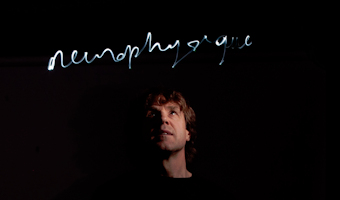The Physics & Astronomy Colloquium Series presents André Longtin from University of Ottawa, on the Physical Limits of Sensory Integration and Control on Friday, Sept. 15, at 4:10 p.m. in Walter 245.

André Longtin (Photograph by Peter Martin)
Abstract: Theoretical studies of brain function have led to advances in biophysics as well as statistical and nonlinear physics. Recent advances are highlighted here in the context of sensory systems. These systems provide a particularly good window onto questions of neural dynamics, control and information processing, because they have a well-characterized physical input.
This talk will first present recent work on information processing at the limits of sensory detection. The probabilistic encoding of sensory signals as modulations of intrinsically correlated neural point processes is shown to enhance their detectability and information content as sequences of firing or “spike” times. Downstream neurons further aim to derive optimal information about the position of objects in the environment. Their sensitivity is found to peak at a characteristic distance where the Fisher information is maximized. This result relies on a correction to the Fisher information for non-Poisson aspect of the firing patterns. It provides a first mathematical description of a sensory “focus”, and this focal point corresponds to the transition from periodic to chaotic dynamics.
Finally we discuss a stochastic optimal control problem to precisely target the spike times of a leaky integrate-and-fire (LIF) model of a neuron with noise. Such a model is in fact an Ornstein-Uhlenbeck process with an absorbing boundary, for which we are controlling the mean first passage time. The optimal control problem is solved using dynamic programming when the controller has access to the voltage (closed-loop control), and using a maximum principle for the transition density when the controller only has access to the spike times (open-loop control).















Comments